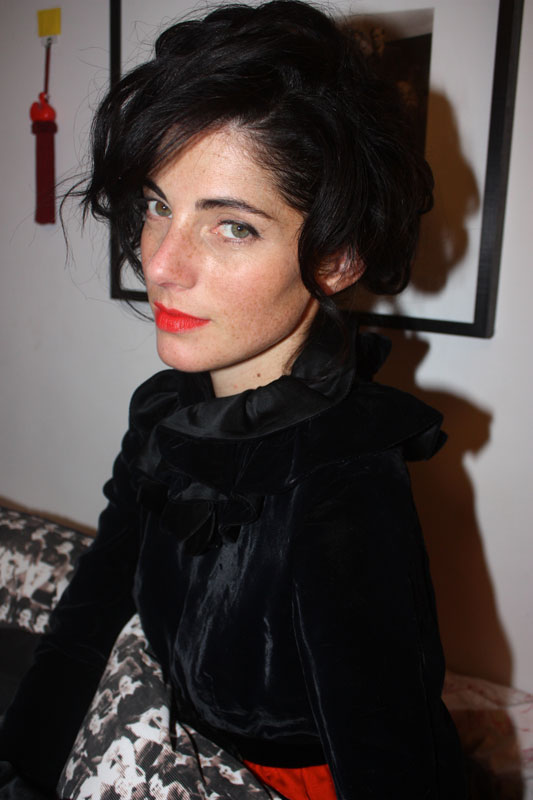Month: December 2015
What happens if you expand higher education?
This is based on Italian data from the 1960s:
However, I also find that those induced to enroll earned no more than students in earlier cohorts who were denied access to university. I reconcile these surprising results by showing that the education expansion reduced returns to skill and lowered university learning through congestion and peer effects. I also demonstrate that apparently inframarginal students were significantly affected: the most able of them abandoned STEM majors rather than accept lower returns and lower human capital.
Uh-oh. The good news, however, is that the children of these individuals seem to have ended up in higher-paying jobs.
That is from Nicola Bianchi (pdf), he is now at Northwestern. For the pointer I thank Robin Gaster.
How much does assortative mating matter for income inequality?
The astute Kurt Mitman noted that Greenwood, et.al. issued a later corrective (pdf) to their earlier 2014 AER piece (ungated here), and therefore their estimates in that piece (which I very recently cited) contain no real information. I apologize for having cited the piece, as I was not aware of the later correction.
It would be incorrect to conclude, however, that assortative mating has no connection to income inequality. Some of the other evidence for that connection is cited in my piece, but more specifically Greenwood et. al. have since revised their own revision (pdf), and produced a more integrated model. A gated version of this piece was just published in American Economic Journal: Macroeconomics this last week.
In the integrated model, the focus is on family and labor supply decisions more generally. For instance, let’s say a couple keeps its income up by not divorcing: is that “no divorce” or rather “assortative mating” which is contributing to income inequality? After all, high income, high education, well-paired couples do divorce a lot less, so that may be a semantic distinction from a causal point of view. The authors suggest that their integrated family model explains about a third of the rise in income inequality from 1960-2005 (see for instance p.46, with a summary of their overall approach and results starting on p.47), and assortative mating is very much a part of their bigger-picture story.
Monday assorted links
1. “…the only guilded butler in North America…” “In Canada, graduating butlers fresh from school can expect annual wages in the $50,000 to $60,000 range, climbing to $75,000 within five years. After 10 years, according to Mr. MacPherson, butlers can look forward to six-figure salaries.” Finally: ““If you think you love people, but you’re not sure you love people, it’s not the profession for you.””
2. WTF?
3. A good review of Carol. And Valentina’s in Austin is an A+, get the brisket taco, smoked corn, and beans.
4. What makes an academic paper useful for health care policy?
5. Sidney Mintz has passed away. Ellsworth Kelly and Meadowlark Lemon, too. The latter two are NYT links.
6. Seymour Hersh’s speculative piece on Syria, Turkey, Russia, etc. Not a pretty picture.
A Bitcoin Magic Trick
I love this scene from Digital Gold, Nathaniel Popper’s entertaining book on the history of and people behind Bitcoin. Wences Casares, a successful internet entrepreneur and Bitcoin enthusiast, is at a party of millionaires and billionaires and he wants to impress the crowd:
To prove how easy this all was, Wences asked Blodget to take out his phone and helped him to create an empty Bitcoin wallet. Once it was up, and Wences had Blodget’s new Bitcoin address, Wences used the wallet on his own phone to send Blodget $250,000..the money was then passed to the phones of other people around the table once they had set up wallets. Anyone could have run off with Wences’s $250,000, but that wasn’t a risk with this particular crowd. Instead, as the money went around, Wences saw the guests’ laughter and wide-eyed amazement at what they were watching.
Wences is something of a character. Russ Roberts did a good interview with him on EconTalk.
Do Tinder and related services increase assortative mating?
Under one model, Tinder teaches you the joys of tussling with those from “the other side of the tracks,” and pulls you away from marrying a fellow Ph.d. — “once you’ve tried Mack, you’ll never go back.”
My intuition differs. You use Tinder in bars, venues, and neighborhoods you have chosen. So you end up tussling with, or mating with, or just chatting with, the more attractive members of your own preferred socioeconomic group. If your group wasn’t on average so sexy to begin with, well at least at the top end it just got a big upgrade in terms of your actual access to attractiveness. So on net the high socioeconomic groups become sexier, at least for those “at the top” with the most choice.
(I am assuming by the way that male photos can to some extent signal status, income, and education, and not just looks; furthermore the male follow-up can demonstrate this readily. And many “connection” services post this information in one form or another as part of the profile. If need be, in general equilibrium bars can adjust their exclusiveness levels to match better to a world-with-Tinder, so that bar patrons are not lured into socioeconomically mistaken “honey pot” marriages.)
Most of all, Tinder gets you out more. You sample more people, even if you don’t end up meeting them through the Tinder app itself. Going to a bar or public space is a better way to spend time than before, and that draws others out too. That’s right, “thick market externalities.” The resulting extra meetings tend to favor assortative mating, just compare such plenitude to a corner solution where you meet only one potential spouse your entire life, namely the proverbial girl next door.
Put it this way: George Clooney or a Silicon Valley billionaire can do better — especially better, compared to others — choosing from 500 people than from five. He (she) has a very good chance of getting his (her) absolute top favorite pick, or close to it. The local milkman also does better from a larger sample size, if only because of match and compatibility issues, but can’t expect to move up so much and of course the pool as a whole can’t “move up” at all. (If you wish, break this down into a positive-sum compatibility component and a competitive zero-sum component; unlike Clooney the milkman may not gain on the latter.)
Finally, Tinder may make it easier for married people to find casual sex, again if they have the right qualifications. Therefore those marrieds may, earlier on, decide to choose a spouse on the grounds of IQ and education, again boosting assortative mating in terms of those features.
In sum, I expect Tinder to boost assortative mating, at least at the top end of the distribution in terms of IQ and education.
And please note, I suspect this increase in assortative mating is a good thing. The abilities of top achievers have a disproportionate impact on the quality of our lives, due to innovation being a public good.
In any case, file under speculative.
Addendum: An interesting twist on the model is to assume that men have some willingness to marry down in terms of education, in return for beauty or other forms of household production, but women do not. An increase in the total sampling of potential partners therefore boosts the marriage prospects of very beautiful women, at the expense of less beautiful women of a given level of educational attainment. In percentage terms, very beautiful women of decent but not extraordinary educational achievement gain the most. Men who are indifferent to such forms of female beauty end up with the smartest children.
Second addendum: Yesterday brought an ongoing twitter exchange on these issues, you might start with tweets by @ninjaeconomics and @modestproposal.
Sunday assorted links
1. How bad are things? Arguably this post needs a broader sense of what makes a life valuable, still one of the more interesting blog posts of the last year.
2. Rubber’s reach.
4. Used bookstores are making a big comeback.
5. In Austin, Gary Leff and I enjoyed Papalote Taco House, thanks for your earlier suggestions. Pipian was best.
6. Affluent white people are the most likely to refuse vaccination for their children.
Sweden fact of the day
Bills and coins now represent just 2 percent of Sweden’s economy, compared with 7.7 percent in the United States and 10 percent in the euro area. This year, only about 20 percent of all consumer payments in Sweden have been made in cash, compared with an average of 75 percent in the rest of the world, according to Euromonitor International.
Cards are still king in Sweden — with nearly 2.4 billion credit and debit transactions in 2013, compared with 213 million 15 years earlier. But even plastic is facing competition, as a rising number of Swedes use apps for everyday commerce.
At more than half of the branches of the country’s biggest banks, including SEB, Swedbank, Nordea Bank and others, no cash is kept on hand, nor are cash deposits accepted. They say they are saving a significant amount on security by removing the incentive for bank robberies.
Here is the full NYT story by Liz Alderman.
The marriages of power couples reinforce economic inequality
That is my latest Upshot column for the NYT, here is an excerpt:
Of all the causes behind growing income inequality, in the longer run this development may prove one of the most significant and also one of the hardest to counter.
For instance, the achievement gap between children from rich and poor families is higher today than it was 25 years ago, according to a recent study from the Pew Research Center. Furthermore, higher income and educational inequality increase the incentive to seek out a good marriage match, so the process may become self-reinforcing.
…The numbers show that assortative mating really matters. One study indicated that if the marriage patterns of 1960 were imported into 2005, the Gini coefficient for the American economy — the standard measure of income inequality — would fall to 0.34 from 0.43, a considerable drop, given that the scale runs from zero to one…
A study of Denmark by Gustaf Bruze…showed that about half of the expected financial gain of attending college derived not from better job prospects but from the chance to meet and marry a higher-earning spouse.
…a recent paper by Robert D. Mare, a professor of sociology at the University of California, Los Angeles, showed that assortative mating was relatively more common in America’s Gilded Age, fell and reached a much lower level in the 1950s, and afterward started and continued to rise.
The G.I. Bill may have helped lower assortative mating, because it gave opportunities for upward mobility to economic classes that had not enjoyed it. In general, the greater the number of men entering the middle class, the more socioeconomic mixing will occur.
In 1950 it was also the case that marriage ages were especially young, meaning that couples often paired off from high school and may have had less of a sense how to match to each other by expected income or education. And most women had fewer chances to earn very much, so few if any men were searching hard to find future law partners or doctors.
I would put it this way. I frequently read the Sunday marriage pages of The New York Times, and I never feel that I am tearing myself away from social science research.
Do read the whole thing.
From the comments, on sexist pricing
See Pashigian, B. P.. (1988). Demand Uncertainty and Sales: A Study of Fashion and Markdown Pricing. The American Economic Review, 78(5), 936–953. Retrieved from http://www.jstor.org/stable/1807158
Basic idea: there are more and better priced clearance sales for items that quickly go out of fashion, fewer clearance sales for non-fashionable items (e.g., white shirts, blue blazers, grey pants.)
That is from Hal Varian, on the topic of “sexist pricing.”
Why did economists ignore the rise of the top one percent for so long?
Daniel Hirschman at the University of Michigan wrote a dissertation chapter on that topic, in the field of sociology, here is the abstract:
In the 2000s, academics and policymakers began to discuss the growth of top incomes in the United States, especially the “top 1%.” Newly analyzed data revealed that top income earners in the 1990s received a larger share of income than at any point since the Great Depression, and that their incomes had begun a dramatic upward climb in the early 1980s. This paper investigates why it took two decades for this increase in top incomes to become politically and academically salient. I argue that experts assembled two “regimes of perceptibility” (Murphy 2006) for producing knowledge about income inequality, and that neither of these regimes was capable of tracking movements in top incomes. Macroeconomists focused on labor’s share of national income, but did not examine the distribution of income between individuals. Labor economists, on the other hand, drew on newly available survey data to explain wage disparities in terms of education, age, work experience, race, and gender. By relying on surveys, these scholars unintentionally eliminated top incomes from view: surveys top-coded high incomes, and thus were incapable of seeing changes in the top 1%. Studies of top incomes that relied on income tax data thus fell by the wayside, creating the conditions under which experts, policymakers, and the public alike could be surprised by the rise of the 1%. This historical narrative offers insights into the political power of economic expertise by clarifying the complex linkages between observations, stylized facts, causal theories, and policy attention.
The chapter is here (pdf). There is too much general background in this piece, and it is silly for the author to say that macroeconomics did not exist before 1930. Most of all, that the import of the growth of incomes in the top one percent remains underexplained I think is outside his framework. Nonetheless there are some points of interest throughout the chapter.
Here is Dan Hirschman’s home page.
Pointers run through Marshall Steinbaum and Henry Farrell.
*The Conflict Shoreline*, best non-fiction book of the year
For best non-fiction book of the year, a late entry swoops in to take first place! That’s right, I am going to select The Conflict Shoreline: Colonization as Climate Change in the Negev Desert, by Eyal Weizman and Fazal Sheikh.
This is an unusual book. It is only 85 pp. of text and about half of it is aerial photos and maps. It covers the history of the Negev desert, the Bedouin, Israeli policy toward the Bedouin, ecology, seed botany, and the roles of water policy and climate change, all in remarkably interesting and information-rich fashion, with a dose of Braudel and also Sebald in terms of method.
For one thing, it caused me to rethink what books as a whole should be. This is one cool book.
To make it stranger yet, this book is Weizman’s response to Sheikh’s The Erasure Trilogy, which is structured as a tour of the ruins of the 1948 conflict. That book is I believe from a Palestinian point of view, and described as a “visual poem.” I just ordered it; note that Sheikh is the photographer for The Conflict Shoreline and thus listed as a co-author.
Some will read The Conflict Shoreline as “anti-Israeli” in parts, but that is not the main point of the book or my endorsement of it. The book however does point out that Israeli policies toward the Bedouin often were prompted by a desire to remove large numbers of them from their previous Negev land and move them into the West Bank and Egypt. I had not known “The village of al-‘Araqib has been destroyed and rebuilt more than 70 times in the ongoing “Battle over the Negev””. The book ends with a two-page evidentiary aerial photo of that village, taken during 1945; other photos of it date as far back as 1918. This is all part of Weizman’s project of “reverse surveillance.”
It is a hard book to summarize, in part because it is so visual and so integrative, but here is one excerpt:
The Negev Desert is the largest and busiest training area for the Israeli Air Force and has one of the most cluttered airspaces in the world. The airspace is partitioned into a complex stratigraphy of layers, airboxes, and corridors dedicated to different military platforms: from bomber jets through helicopters to drones. This complex volume is an integral part of the architecture of the Negev.
And then it will move to a discussion of seed technology, or how Bedouin economic strategies have changed over the course of the twentieth century, and how these various topics fit together. Think of it also as a contribution to location theory and economic geography, but adding vertical space, manipulated topography, rainfall, and temperature to the relevant dimensions of the problem.
Too bad it costs $40.00. Recommended, nonetheless. Here is one review, here is another, the latter having especially good photos of the book’s photos.
Here is a good interview with Weizman, who among other things outlines his concept of Forensic Architecture.
Here is my earlier post on the best non-fiction books of 2015. And here is an earlier post the best books under one hundred pages.
Christmas assorted links
1. “…military robots transformed into sleigh-pulling reindeer…”
2. Paul Krugman on whether the technological slowdown in ending.
3.”The Wall Street Journal’s survey of economists shows they largely don’t practice what the naysayers preach: 51 of 54 respondents said they bought loved ones gifts; the other three initially said they didn’t, but later admitted they did.” Story here.
4. “Can drones compete with this truck?” And were one million drones gifted today? How many were sent by drone? Next year?
5. Putin perfume.
The Christmas Market

Merry Christmas!
The attached article is here, and here is more information.
Avant-garde candy markets in everything
“Everybody is always like Wonka this, Wonka that, but I just never relate,” said Maayan Zilberman, a lingerie savant turned conceptual confectioner and the creator of Sweet Saba, an avant-garde candy company.
…Behind her was a container of candy rings that resemble men’s sex toys, made with edible gold and pectin. Ms. Zilberman had prepared them initially for a baby shower. “It was for the parents’ friends, not the baby,” she said. Much to her amusement, the $10 rings are often misidentified as doll bracelets by young customers. “They’re some of my best sellers.”
There are also candies that look like gold Rolexes but taste like Champagne ($10), eucalyptus-flavored Q-tips ($8 for six) and pencils that taste like grass ($12 for four). Ms. Zilberman worked with a food technologist to develop about 30 flavors, which include bubble gum, bacon, whiskey and mother’s milk.
“It’s mostly just cream,” Ms. Zilberman said of the last one.
Here is the Joshua David Stein NYT piece. Here is Zilberman’s Instagram page, try this photo of the candy.



